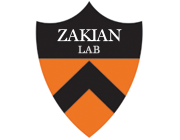Lack of positional requirements for autonomously replicating sequence elements on artificial yeast chromosomes.
Publication Year
1989
Type
Journal Article
Abstract
In the yeast Saccharomyces cerevisiae, origins of replication (autonomously replicating sequences; ARSs), centromeres, and telomeres have been isolated and characterized. The identification of these structures allows the construction of artificial chromosomes in which the architecture of eukaryotic chromosomes may be studied. A common feature of most, and possibly all, natural yeast chromosomes is that they have an ARS within 2 kilobases of their physical ends. To study the effects of such telomeric ARSs on chromosome maintenance, we introduced artificial chromosomes of approximately 15 and 60 kilobases into yeast cells and analyzed the requirements for telomeric ARSs and the effects of ARS-free chromosomal arms on the stability of these molecules. We find that terminal blocks of telomeric repeats are sufficient to be recognized as telomeres. Moreover, artificial chromosomes containing telomere-associated Y' sequences and telomeric ARSs were no more stable during both mitosis and meiosis than artificial chromosomes lacking terminal ARSs, indicating that yeast-specific blocks of telomeric sequences are the only cis-acting requirement for a functional telomere during both mitotic growth and meiosis. The results also show that there is no requirement for an origin of replication on each arm of the artificial chromosomes, indicating that a replication fork may efficiently move through a functional centromere region.
Keywords
Journal
Proc Natl Acad Sci U S A
Volume
86
Issue
3
Pages
973-7
Date Published
02/1989
ISSN Number
0027-8424
Alternate Journal
Proc. Natl. Acad. Sci. U.S.A.
PMID
2644653

